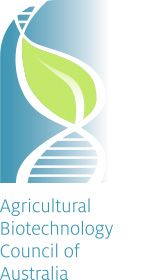March 2014. Source: www.scienceworldreport.com/articles/13508/20140316/cis-genetic-engineering-yields-bio-friendly-fire-blight-resistant-apples.htm
Researchers from ETH Zurich and the Julius Kühn Institute in Germany have created the first fire-blight-resistant apple. With the aid of so-called cis-genetic engineering, they transfered a resistance gene from a wild apple into the genome of a Gala apple. Tests in the greenhouse indicate that the gene is effective in protecting the tree against the disease.
Fruit farmers dread fire blight. The infection keeps flaring up again and causes considerable damage to apple plantations. In 2007, when the last major epidemic hit Switzerland, the damage the country suffered cost CHF 50 million and 250,000 trees had to be destroyed. Farmers primarily use sprays containing the antibiotic streptomycin against the pathogen, the bacterium Erwinia amylovora – a controversial method to save fruit trees and harvests.
A team of researchers headed by ETH-Zurich plant pathologist Cesar Gessler and from the Julius Kühne Institute in Germany report a genetically modified apple of the popular Gala variety in the latest issue of Plant Biotechnology Journal that is resistant to fire blight. In an earlier issue of this journal, the researchers presented an apple tree of the same variety that can ward off scab, a common fungal disease, thanks to the insertion of a scab resistance gene of a wild apple.
The researchers succeeded in identifying and isolating the gene for fire-blight resistance in a wild apple for the first time and confirming its function as a resistance-mediating gene…
Gessler and his collaborators were using so-called cis-genetic engineering. Additional genes are incorporated into cis-gene organisms using the biotechnological methods available. However, these are not foreign to the species, as in the case of so-called transgenic organisms. Instead, the apple only receives genes from another variety of apple.
The researchers tested the fire blight resistance properties of the cis-gene apple trees in the greenhouse at the Agroscope research facility in Wädenswil and in Germany by infecting them with fire blight. The results revealed that the resistance gene took effect and prevented the trees from becoming infected.
Although Gessler has now been able to reap the fruits of his years of research and development work, he does not believe that fruit farmers will ever grow these cis-gene apples. On the one hand, there is a still a moratorium on genetic engineering in Switzerland, banning the cultivation of genetically modified organisms (GMO), which also affects cis-gene crops. “Moreover, there is still too much opposition to GMO in Switzerland,” he says. And, unlike in the USA, here in this country and the EU we don’t assess individual products for approval, but rather the technology used while growing them. “Unless the attitudes and legislation change, the cis-gene Gala apple will never be grown,” the plant pathologist sums up.

